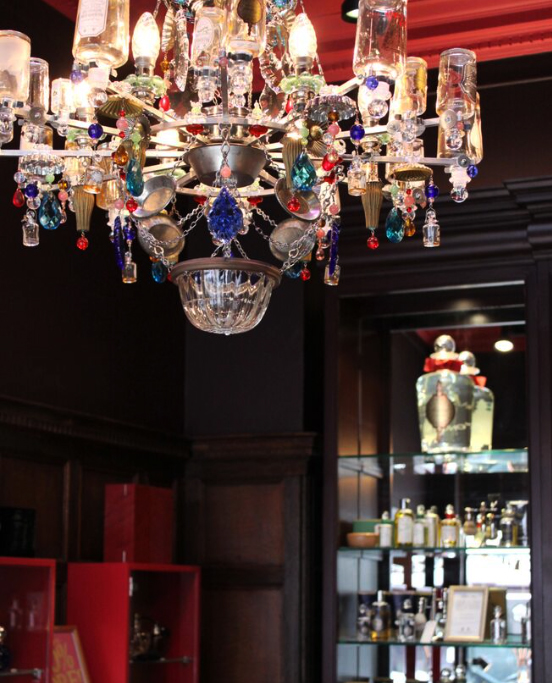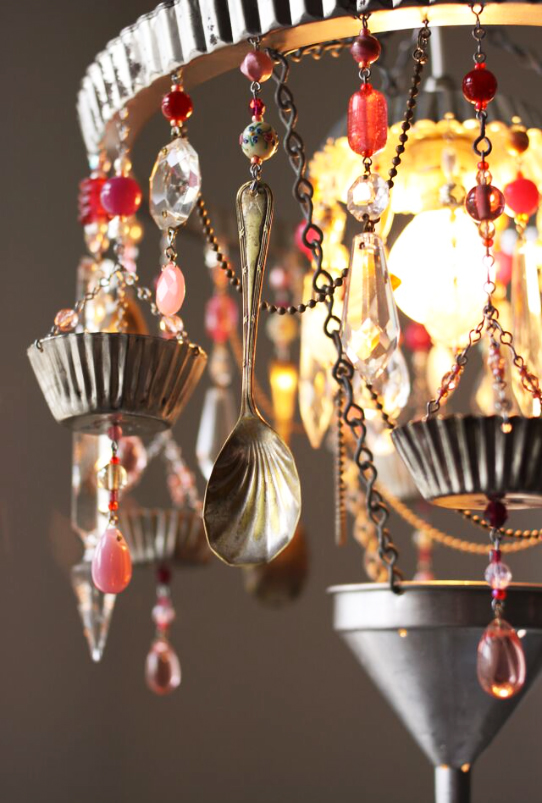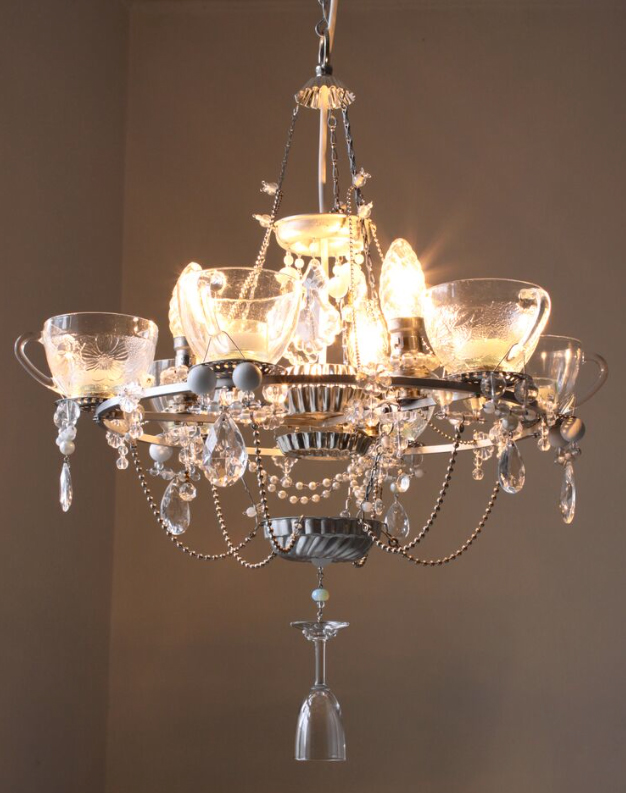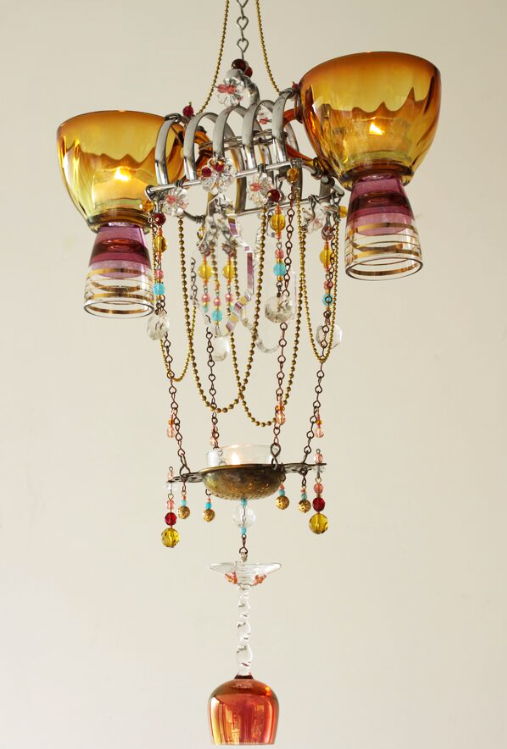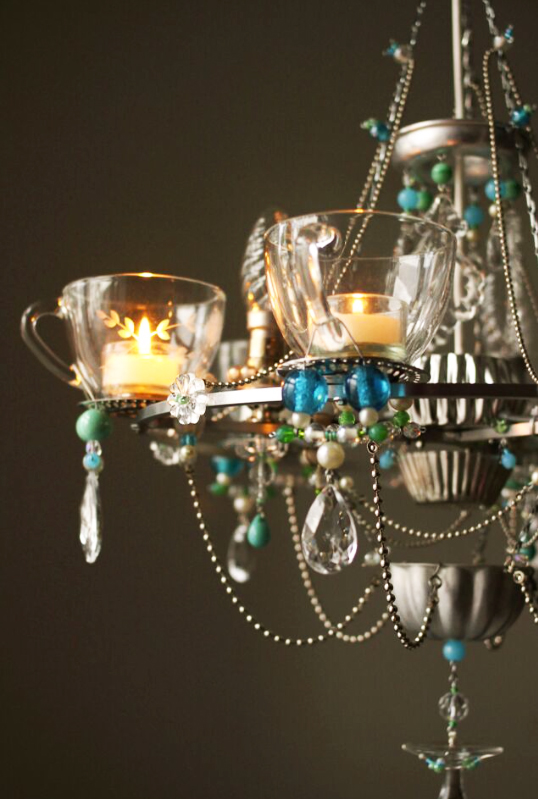Upcycled, recycled: Madeleine Boulesteix chandeliers
Madeleine Boulesteix can take a box of unwanted glasses, teacups and jelly moulds and turn them into chandelier that will captivate and delight you for years to come. She talks to Abby Trow about her work
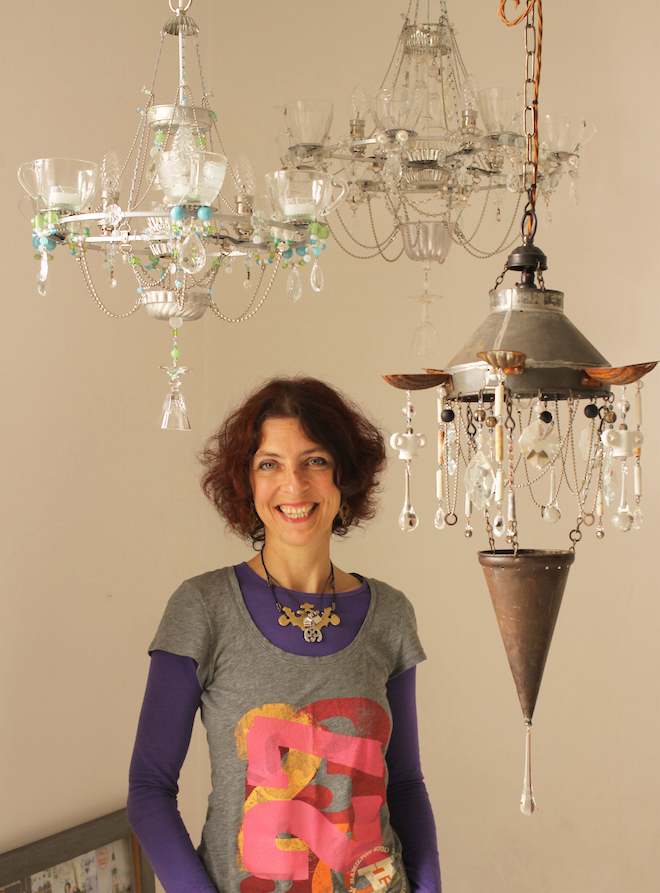
Madeleine Boulesteix has been a maker, doer and mender all her life, so upcycling/recycling was always going to be the driver for her work. Pictured above: Madeleine's wonderful, exuberant, quirky but always elegant chandeliers are made from bits and pieces found here and there - the contents of kitchen drawers and cupboards proving particularly bountiful...
The word 'chandelier' has many connotations...grandeur, lavishness, opulence, glittering crystals, precious metals. So a chandelier made from old cutlery, pastry cutters, wine glasses, and jelly moulds sounds like an a three-dimensional oxymoron.
Madeleine Boulesteix doesn't want to be labelled a grande dame of upcycling, but she has been making her inimitable chandeliers for over 20 years - and when she started words such as 'upcycling' and 'preloved' weren't in the lexicon.
Now we're all going wild for things upcycled or repurposed, which is fantastic, says Boulesteix - though she admits to being a bit suspicious of the present mania for making seats out of upturned apple crates and turning cheese graters into table lamps. 'I suppose I'm waiting to see if it's just a passing fad... And there's also the issue of quality,' she says. 'Not everything is great just because it's made from upcycled materials.'
Boulesteix makes her chandeliers for a diverse clientele, ranging from leisure and retail outlets to tea-rooms to people who want a lighting centrepiece for their home that is also a unique piece of art. She doesn't count the hours it takes to make each one but suffice to say each is a labour of love.
'We should use materials that are already in existence'
Boulesteix says she's a scavenger in the interests of sustainability, and it's long been her raison d'etre to put nothing new in material terms into the world, on the grounds that there's a surplus of stuff already.
'Which doesn't mean you can't make new things, it just means we should use materials that are already in existence.'
And she does exactly that; visiting flea markets, second-hand shops, jumble sales and going on treasure hunts by the Thames to find the materials she needs for her lights - mainly chandeliers but also wall sconces.
'For me I was brought up to be thrifty and creative, to re-use things, to mend things. So I've always felt strongly that there's no need to make things from new materials. There really are enough raw materials in the world already and we all need to get into the habit of re-using them.'
Boulesteix - who's recently moved to south Devon after many years in south London - went to art school, but says she never wanted to make art for art's sake. 'For me, I'm not attracted to the notion of making, say, a sculpture that just sits in a room and all you can do is look at it. That's why I decided on lighting, because a light can be beautiful but it has a purpose.. everyone needs light.'
She made her first chandelier as an experiment after coming across a bag of decorative glass. The pieces were pretty and not being awash with cash, she had the idea of combining them with some of those simple glass teacups popular in the '70s. After hours of experimentation, she produced her first teacup chandelier. Subsquently, a friend began to weld frames for the lights using scrap metal.
And she's remained true to the piece, not veering off into other products. 'I still love making the lights, working out which materials will work together. And I've become good at making them over the years, so that's what I do.' (When she started making them, they took candles or tealights, but now customers can have the chandelier wired.)
And as with so many things, what looks simple to make isn't. 'You have to get the right balance, the right colours, the right dimensions. I really don't want my customers coming in with a bag of beads and kitchen utensils and saying 'here you go, make me a light out of this lot...' I need to source the materials and then work out how to use them to best effect.'
Boulesteix chandeliers are very pretty and they are quirky but if you look closely at them you can see that one thing they're not is kitsch, a genre she finds too garish.
'My work is proportioned, it has symmetry and while I hope it does amuse, it's there to work as a light and to last for a very long time.'
And the lights also use the found materials in a subtle way. What you see first is a beautiful chandelier, then on close inspection you may think 'good lord that's a tea cup and what, can that really be a jelly mould?!'.
'For me it's nicest of all when people just look at the chandeliers and you can tell from their expression that they're not seeing upcycled kitchenware, they just like the piece.'
Madeleine Boulesteix chandeliers are made to order and prices vary. The largest model, the eight-cup chandelier costs £985 so smaller fixtures can be considerably less.
